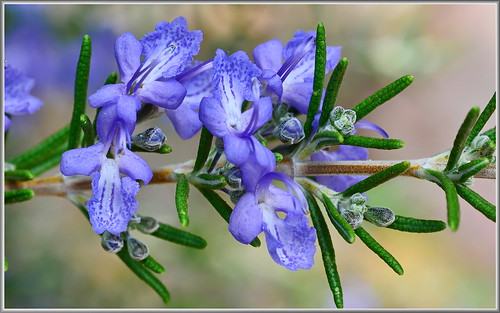This piece was originally published in the Rochester Democrat and Chronicle in November of 2004, and was referenced January 3, 2015, in my column about holiday plants. A number of readers emailed asking for a copy, so I thought I would post it here for your reading convenience. Thanks! — Jane
Q: Any suggestions on keeping rosemary over the winter? I know this is the $64,000 question.
—A.W., via e-mail
A: You’ve come to the right place. As someone who has killed numerous rosemary plants over numerous winters, I can certainly tell you what not to do.
Don’t overwater. Like many plants with strongly-scented, silver-tinged leaves, rosemary prefers dry soil. It’s better to keep it in an unglazed clay pot than in plastic or any material that will lessen the soil’s ability to release moisture. Drainage holes are a must.
Don’t underwater. Many houseplants will tolerate being dry to the point where the leaves wilt. Water them, they perk up, and life goes on. (This isn’t great for the plants, but unless they’re abused this way with regularity, it doesn’t kill them.) Not so with rosemary. After just one time of being seriously dried out, it simply won’t revive. This trait is made more troublesome by the fact that it’s difficult to just look at the plant and tell if it needs water. (Many houseplants’ leaves start to take on a subtle translucent cast, or even just look “sad,” when thirsty. By the time rosemary looks sad it’s already dead.)
Unless you have a cold frame, don’t attempt to leave it outside. Some varieties of rosemary, ‘Arp’ and ‘Madeline Hill’ being two, are hardier than others, but that doesn’t mean they’ll survive an upstate New York winter. I’ve planted both in spots with good winter protection and lost both. The closer you live to the lake the better your chances, but there are no guarantees.
Don’t grow it in the bathroom. Or near the fireplace. High humidity promotes powdery mildew, which shows up as a white, fuzzy coating on the leaves. (Rosemary is, after all, a culinary herb, and powdery mildew doesn’t taste very good, aside from being unhealthy for the plant.) If you must grow rosemary in super-high humidity, at least point a fan at it for a few hours each day to increase air circulation. Confusingly, the plant itself enjoys humidity, so if your house is very dry, consider placing the pot on a tray of pebbles that you can keep wet, while allowing the soil to remain dry.
Give up yet? Don’t do that either. Plenty of green thumbs manage to enjoy rosemary year-round. Here are some of their tips.
Keep in a cool, sunny spot. Rosemary needs all the light it can get and thrives in night temperatures into the low 50s. A cool greenhouse, sunroom, or sunny attic window is ideal.
Watch for the tiny webbing of spider mites. These pests may not have bothered your rosemary outdoors, but may become problematic once inside, where they are encouraged by high heat, low humidity and an absence of predators.
Image courtesy flickr: tdlucas5000
Views: 1







